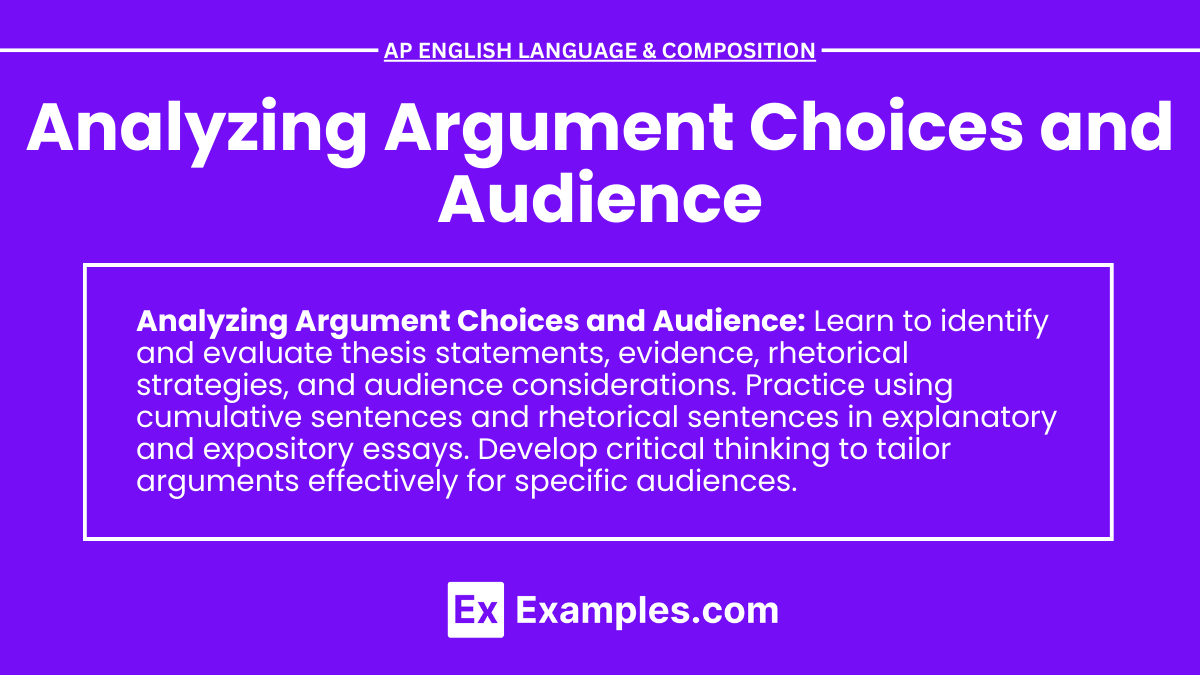In the AP English Language and Composition exam, mastering the ability to analyze argument choices and their impact on the audience is essential for creating compelling essays and speeches. Whether engaged in argumentative writing or delivering an argumentative speech, understanding how to use rhetorical sentences and cumulative sentences effectively can greatly enhance your persuasiveness. This involves examining the rhetorical strategies, evidence, style, and tone used to tailor arguments to specific audiences. By developing this skill, you can craft nuanced and impactful arguments that resonate deeply with your readers or listeners.
Learning Objectives
By studying the topic of analyzing argument choices and audience, students will achieve several key learning objectives. They will enhance their critical thinking skills by evaluating how arguments are constructed and tailored to specific audiences. Students will learn to use cumulative sentences and rhetorical sentences to enhance their explanatory essays and expository essays. They will develop the ability to craft a strong final thesis statement that reflects a deep understanding of audience considerations and rhetorical strategies. Mastery of these techniques will enable students to produce well-structured, persuasive, and audience-focused essays.
Understanding Argument Choices
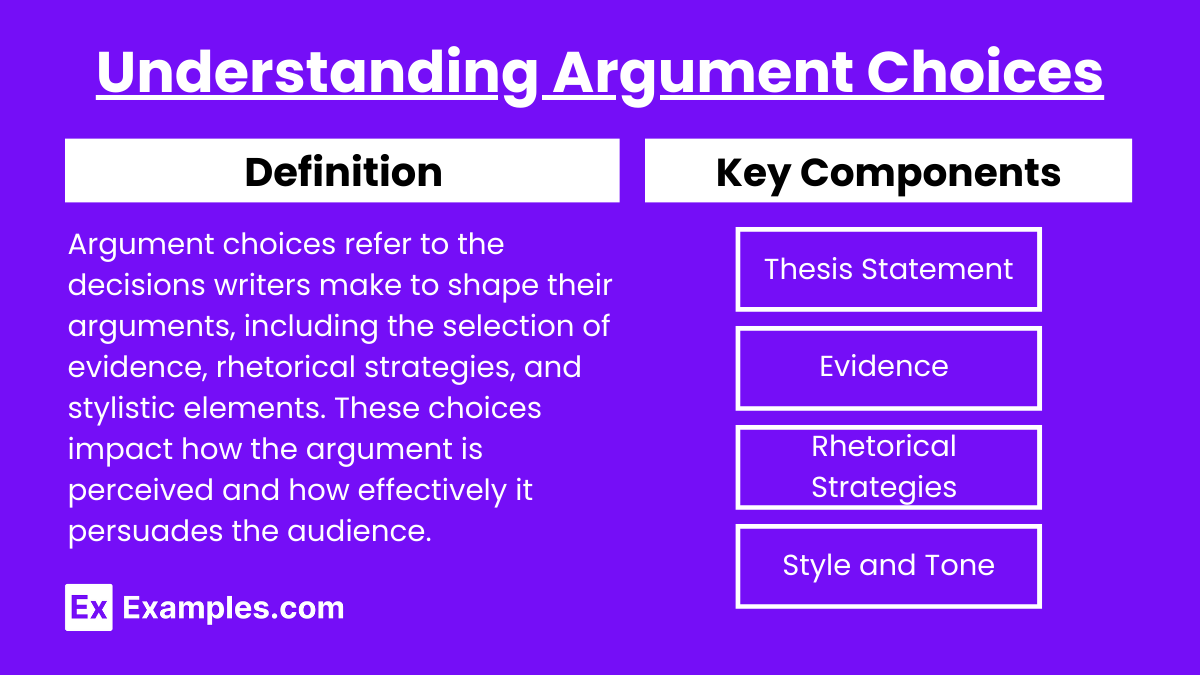
Definition
Argument choices refer to the decisions writers make to shape their arguments, including the selection of evidence, rhetorical strategies, and stylistic elements. These choices impact how the argument is perceived and how effectively it persuades the audience.
Key Components
- Thesis Statement: The main claim or argument that the writer aims to prove.
- Evidence: Facts, statistics, quotes, and examples used to support the thesis.
- Rhetorical Strategies: Techniques such as ethos, pathos, and logos used to persuade the audience.
- Style and Tone: The writer’s voice and attitude, which can affect the argument’s reception.
Analyzing Audience
Definition
Analyzing the audience involves understanding the characteristics, values, and expectations of the readers or listeners. This knowledge helps in tailoring the argument to resonate with them effectively.
Key Considerations
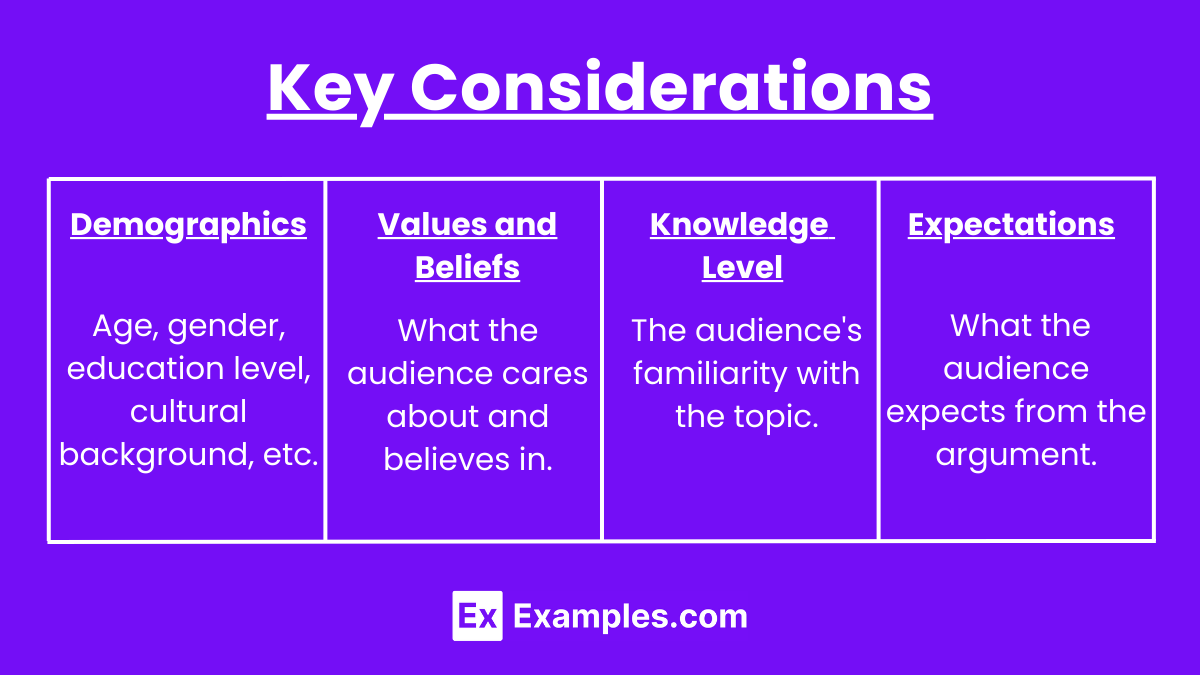
- Demographics: Age, gender, education level, cultural background, etc.
- Values and Beliefs: What the audience cares about and believes in.
- Knowledge Level: The audience’s familiarity with the topic.
- Expectations: What the audience expects from the argument.
Steps for Analyzing Argument Choices and Audience
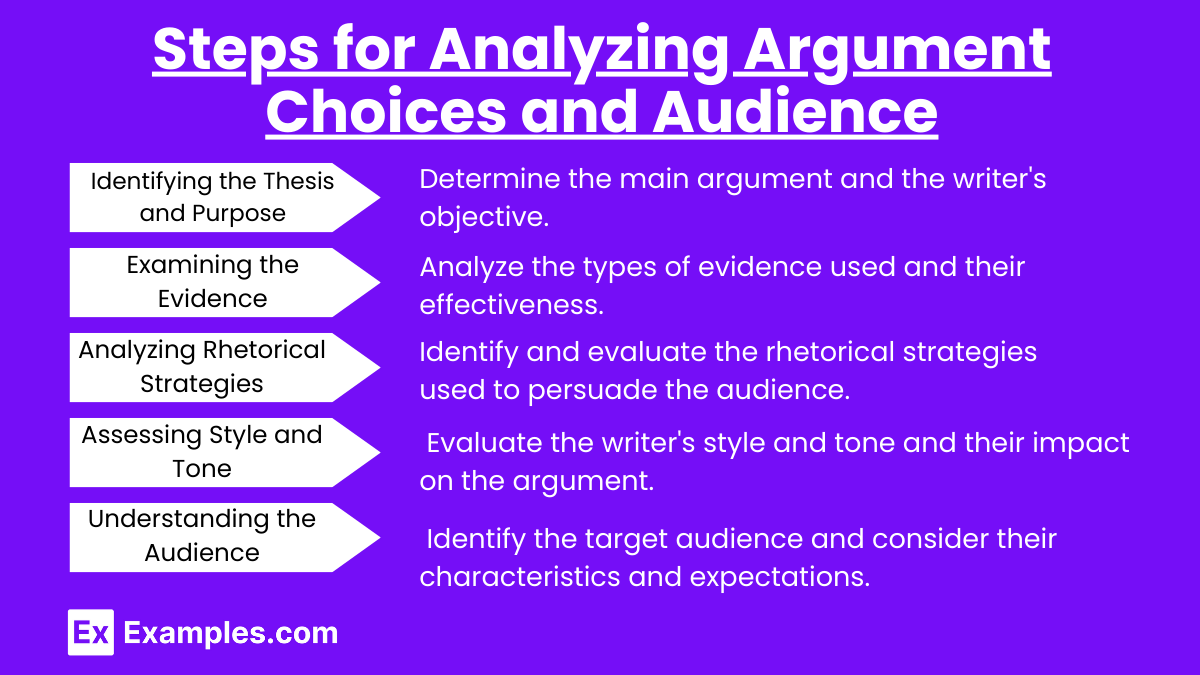
1. Identifying the Thesis and Purpose
- Definition: Determine the main argument and the writer’s objective.
- Techniques:
- Close Reading: Carefully read the text to identify the thesis.
- Contextual Analysis: Consider the context in which the argument is presented.
- Example: “The author argues that renewable energy is crucial for environmental sustainability.”
2. Examining the Evidence
- Definition: Analyze the types of evidence used and their effectiveness.
- Techniques:
- Evaluate Relevance: Assess whether the evidence directly supports the thesis.
- Assess Credibility: Consider the reliability of the sources.
- Example: “The author uses scientific studies and expert testimonials to support the claim.”
3. Analyzing Rhetorical Strategies
- Definition: Identify and evaluate the rhetorical strategies used to persuade the audience.
- Techniques:
- Ethos: Analyze how the writer establishes credibility.
- Pathos: Examine how the writer appeals to the audience’s emotions.
- Logos: Assess the logical reasoning and evidence presented.
- Example: “The author appeals to ethos by citing reputable scientists and pathos by describing the impact of climate change on future generations.”
4. Assessing Style and Tone
- Definition: Evaluate the writer’s style and tone and their impact on the argument.
- Techniques:
- Diction: Analyze word choice for formality and connotations.
- Syntax: Examine sentence structure and complexity.
- Tone: Determine the writer’s attitude toward the subject and audience.
- Example: “The author’s formal tone and sophisticated diction enhance the credibility of the argument.”
5. Understanding the Audience
- Definition: Identify the target audience and consider their characteristics and expectations.
- Techniques:
- Audience Analysis: Determine the demographics, values, and knowledge level of the audience.
- Tailoring the Argument: Adjust the argument to resonate with the audience’s interests and beliefs.
- Example: “The argument is tailored to environmentally conscious readers who value scientific evidence and ethical responsibility.”
Techniques for Effective Analysis
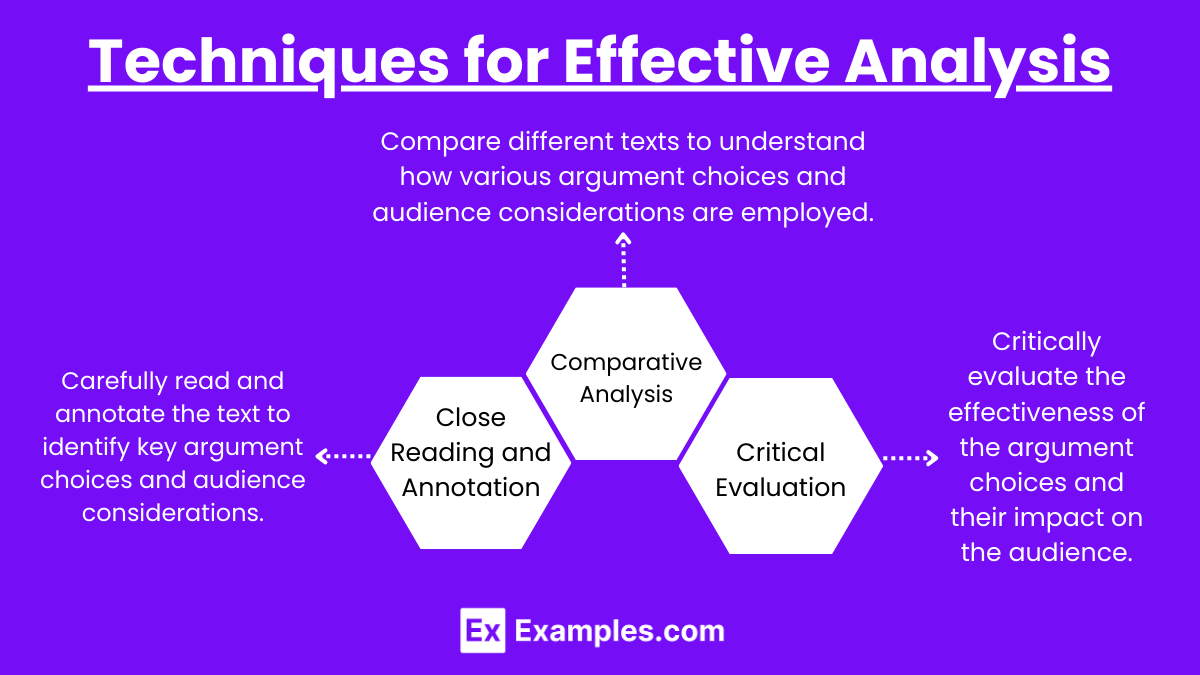
Close Reading and Annotation
- Definition: Carefully read and annotate the text to identify key argument choices and audience considerations.
- Technique: Highlight or underline important passages, and make notes in the margins about rhetorical strategies and audience appeals.
Comparative Analysis
- Definition: Compare different texts to understand how various argument choices and audience considerations are employed.
- Technique: Identify similarities and differences in the use of evidence, rhetorical strategies, and audience targeting.
Critical Evaluation
- Definition: Critically evaluate the effectiveness of the argument choices and their impact on the audience.
- Technique: Assess the strengths and weaknesses of the argument and consider alternative perspectives.
Examples
Example 1: Analyzing a Persuasive Essay on Climate Change
Thesis Statement: “Immediate action is necessary to combat climate change.” Evidence: Scientific studies, statistics on carbon emissions, and examples of environmental impacts. Rhetorical Strategies: Appeals to ethos through expert citations, pathos by describing the plight of endangered species, and logos with logical arguments and data. Style and Tone: Formal, urgent, and informative. Audience: Environmentally conscious readers and policymakers.
Example 2: Analyzing a Speech on Education Reform
Thesis Statement: “Education reform is essential for preparing students for the future.” Evidence: Data on current education system shortcomings, testimonials from educators, and success stories from reformed schools. Rhetorical Strategies: Ethos through credentials of quoted experts, pathos by sharing student success stories, and logos with statistical evidence. Style and Tone: Motivational, hopeful, and authoritative. Audience: Educators, parents, and policymakers.

